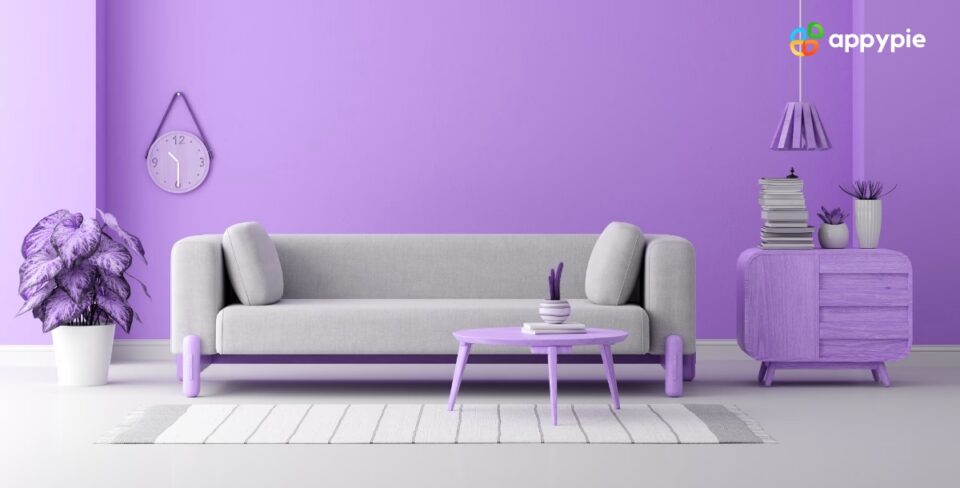Introduction to Lavender Color
1.1 Definition of Lavender Color
Lavender is a soft, muted shade of purple, named after the lavender flower, which is known for its delicate and calming hue. The color is often associated with grace, elegance, and tranquility, making it a popular choice in various design and fashion applications.
1.2 Historical Significance of Lavender
Historically, lavender has held a prominent place in various cultures. In ancient times, lavender was used for its fragrant properties, and its color became a symbol of royalty and refinement. The use of lavender color in garments and decor was often reserved for the elite, signifying luxury and status.
1.3 Popularity in Modern Times
In modern design, lavender has transcended its historical roots to become a versatile and beloved color. It is widely used in fashion, interior design, and branding, appreciated for its ability to convey both calmness and sophistication. Lavender has become particularly popular in minimalist and contemporary designs, where its soft tone adds a touch of elegance without overwhelming the senses.
2. The Psychology of Lavender
2.1 Emotional Impact of Lavender
Lavender is often associated with feelings of calm and relaxation. Its soft, pastel shade is believed to have a soothing effect on the mind, reducing stress and promoting tranquility. This makes lavender a popular choice for spaces designed to relax and unwind, such as bedrooms, spas, and meditation rooms.
2.2 Lavender in Color Therapy
In color therapy, lavender is used to balance emotional energy and promote spiritual healing. It is believed to help in calming the mind, reducing anxiety, and improving sleep quality. The color’s gentle energy is also associated with nurturing and compassion, making it an excellent choice for creating a harmonious environment.
2.3 Cultural Associations
Culturally, lavender carries various meanings across different societies. In Western cultures, lavender is often linked to femininity and romance. In Eastern traditions, lavender is seen as a color of peace and tranquility. These cultural associations have influenced the way lavender is used in art, fashion, and design around the world.
3. Lavender in Fashion and Design
3.1 Lavender in Fashion Industry
Lavender has long been a favorite in the fashion industry, known for its ability to convey both elegance and subtlety. From soft lavender dresses to bold lavender accessories, this color has made a significant impact on fashion trends. Designers often use lavender to create looks that are both sophisticated and approachable, making it a versatile choice for various occasions.
3.2 Use of Lavender in Interior Design
In interior design, lavender is celebrated for its calming and refreshing qualities. It is often used in bedrooms, living rooms, and bathrooms to create serene and inviting spaces. Lavender pairs beautifully with neutral tones like white and gray, as well as with deeper shades like navy and charcoal, allowing for a wide range of design possibilities.
3.3 Lavender in Graphic Design
Lavender has also found its place in graphic design, where it is used to create visually appealing and soothing designs. Whether used in branding, packaging, or digital media, lavender adds a touch of elegance and calmness to visual compositions. Its soft tone makes it an ideal choice for designs intended to convey peace, wellness, and sophistication.
4. Shades of Lavender
4.1 Light Lavender
Light lavender, with its pale and delicate hue, is often associated with softness and purity. It is a popular choice for spring and summer fashion collections, as well as for wedding themes and baby showers. Light lavender creates a fresh and airy atmosphere, making it perfect for spaces that need a gentle and inviting touch.
4.2 Medium Lavender
Medium lavender strikes a balance between the softness of light lavender and the richness of darker shades. It is a versatile shade that works well in both fashion and interior design, offering a subtle yet impactful color that is easy to incorporate into various settings.
4.3 Dark Lavender
Dark lavender, with its deep and rich tone, exudes luxury and sophistication. This shade is often used in formal settings and high-end fashion collections. Dark lavender pairs well with metallic accents like gold and silver, creating an opulent and refined look.
5. Lavender in Nature
5.1 Lavender Flowers
Lavender flowers are known for their delicate beauty and soothing fragrance. They are widely used in gardens, floral arrangements, and essential oils. The color of lavender flowers varies from light to deep purple, offering a visual feast for the eyes.
5.2 Lavender in Landscapes
In landscaping, lavender plants are prized for their hardiness and aromatic properties. They are often used in borders, rock gardens, and herb gardens, adding both beauty and fragrance to outdoor spaces. The sight of a lavender field in full bloom is a stunning example of nature’s artistry.
5.3 Lavender’s Role in Aromatherapy
Lavender’s role in aromatherapy is well-known, with its essential oil being used to promote relaxation and reduce stress. The calming scent of lavender is believed to enhance sleep quality, reduce anxiety, and improve overall well-being. This makes lavender a popular choice in wellness products, including candles, bath salts, and diffusers.
6. Lavender in Art and Literature
6.1 Lavender in Paintings
Lavender has been a favorite color among artists for centuries, often used to depict tranquil landscapes, delicate flowers, and serene skies. The color’s soothing qualities make it ideal for creating peaceful and harmonious compositions. Famous artists, including Claude Monet and Vincent van Gogh, have used lavender tones to evoke a sense of calm and beauty in their works.

